But here in CA, the species isn't Marmota monax - it's Marmota flaviventris, the Yellow-bellied Marmot, and they're uncommon, and only found above 6,000 feet in rocky, talusy habitats.
And, while they're all just big ground squirrels, I like 'em, and appreciate our local's penchant for lazing about in places with perfect views.
So, on a recent backpack in Sequoia National Park, I added a cam trap to my kit to see if I could catch some close-ups of them, and the other high-altitude Rodentia we might camp near. I.e., wild marmots in native habitat, and not 1/2 tame ones taking handouts in a parking lot.
The first leg of our backpack was from Mineral King up to Hockett Meadows - a complex of meadows and lakes at 8,500 feet near the Great Western Divide.
We got our first taste of marmot before we even started our hike. Seems that at the Mineral King trailhead parking lot, marmots come down from nearby rockpiles and chew the hoses out of the parked cars. Fortunately, we lucked into a safe parking zone, and didn't have to protect our engines with crudely constructed wraps, cages or fences.
11 miles later, we arrived at our first base station.
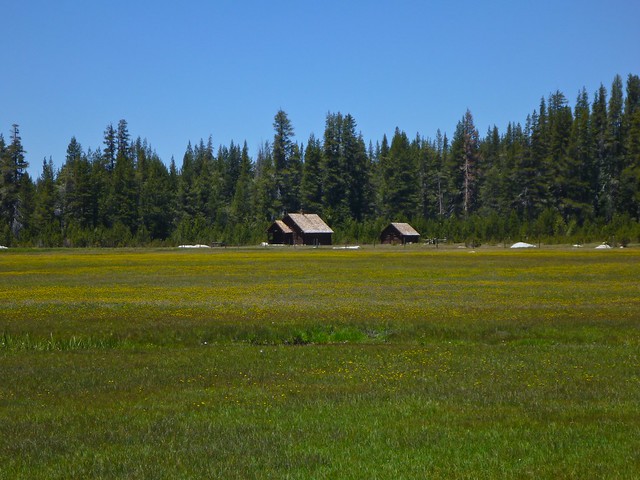
Hockett Meadow and historic Ranger Station (built in 1885) - the yellow flowers are Ivesias
Exploring the meadow, we caught sight of our first marmot:
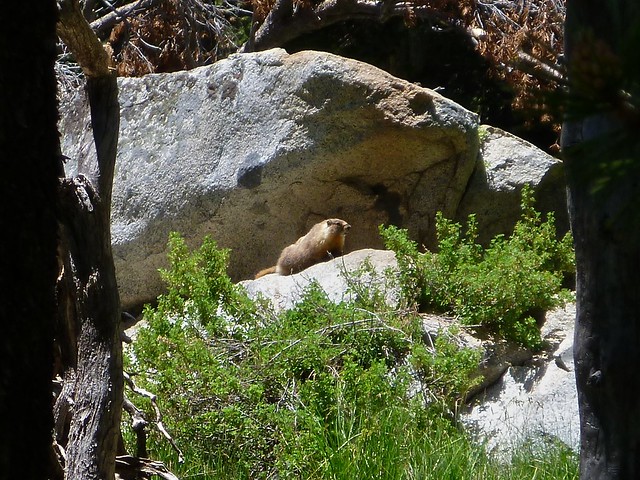
Marmot peeking at us through trees on edge of Hockett Meadow
And quickly learned that marmot sign was not hard to find:
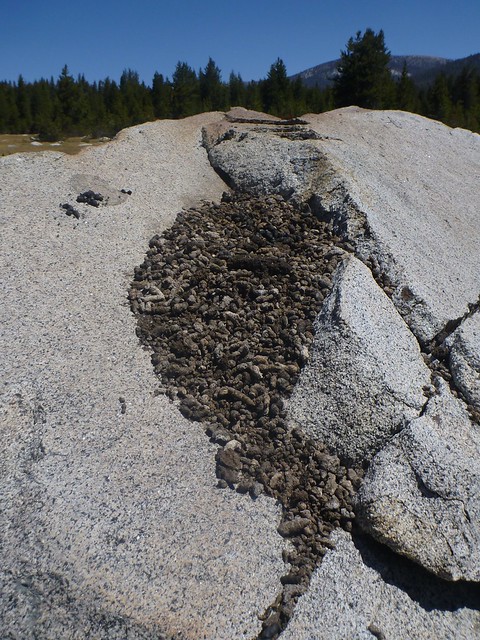
Marmot sign. Maybe a bit too much marmot sign.
So, I set a cam on an out-of-the-way rock where I had seen a marmot and found a few poops:

First cam trap set for marmot - note cam up on rock with post wedged in crack
But only caught a lodgepole chipmunk:
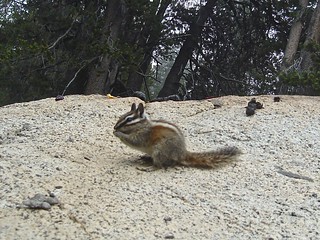
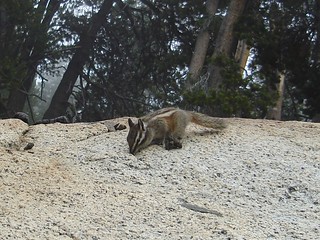
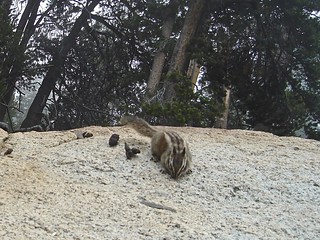
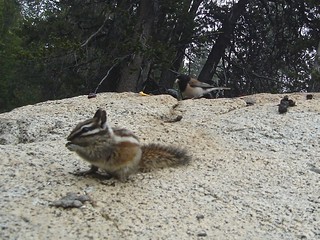
Lodgepole chipmunk, Tamias speciosus, on my marmot rock
A few days later, back down near Mineral King's Cold Springs campground, at 7,800 feet, I tried again. This jumble of rocks had some sign, and I had seen one basking:
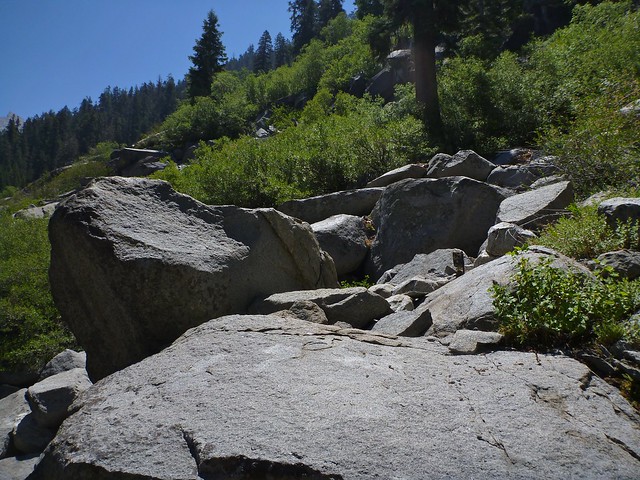
Set near campground - the cam trap is at 3 o'clock, 1/2-way between the center and edge
Finally - some success. No close-ups, but the cam trap caught one out on patrol:


Turns out their territories are large - several acres or more - and they might have multiple basking spots, so getting them isn't as easy as I had hoped.
On our last full day we day-hiked up to Eagle Lake. At 10,010 feet in altitude, it's not only a great home for marmots, but the amazing pika live there too.
We spotted out first marmot of the day kicking back on an outcrop of blue marble:
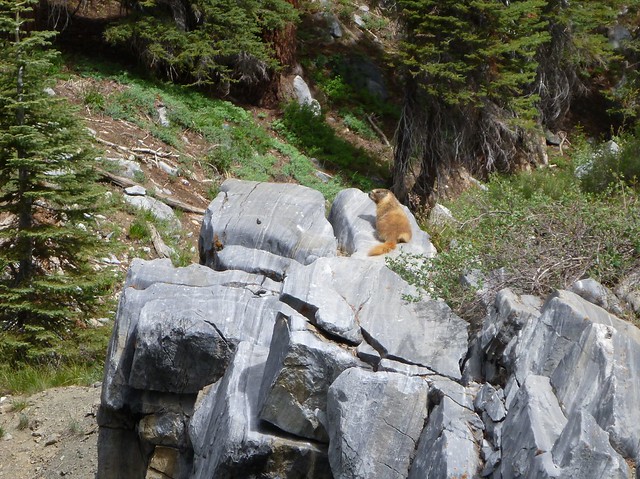
Marmot working the day shift along the Eagle Lake Trail
At Eagle Lake, we stopped to explore and take in the alpine beauty (and to soak our feet).
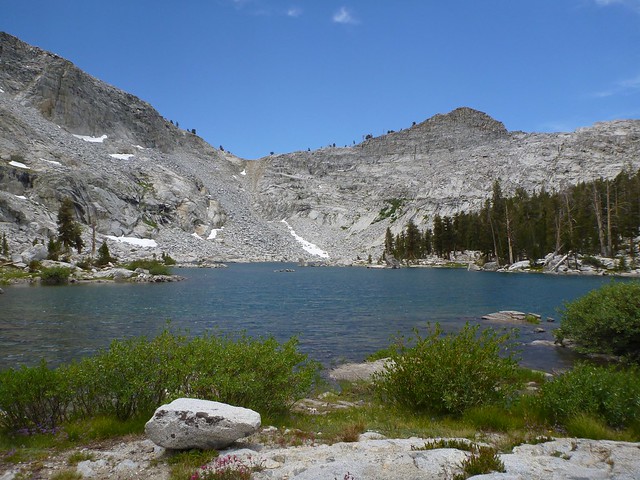
The glacially-carved Eagle Lake at 10,010 feet
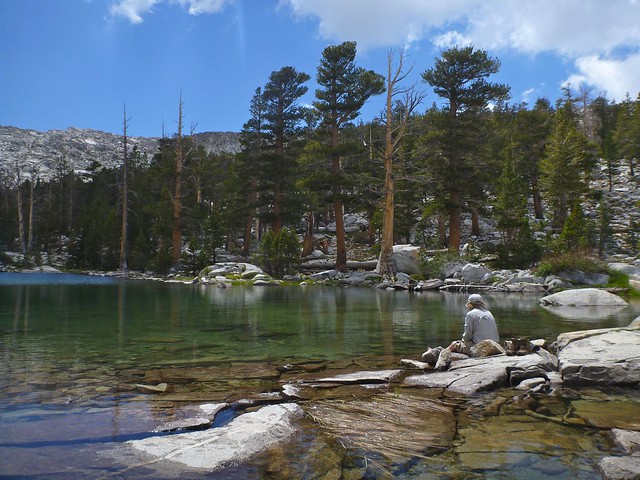
Contemplating the old grove of firs and pines (as we soaked our feet)
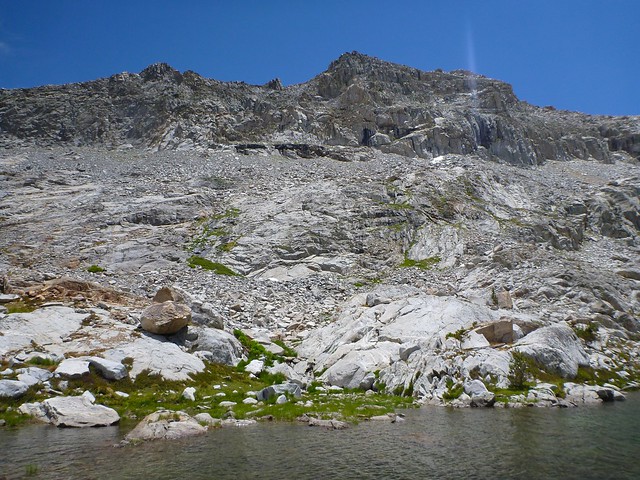
Rock and talus around the lake. We heard pika, but never caught sight of them
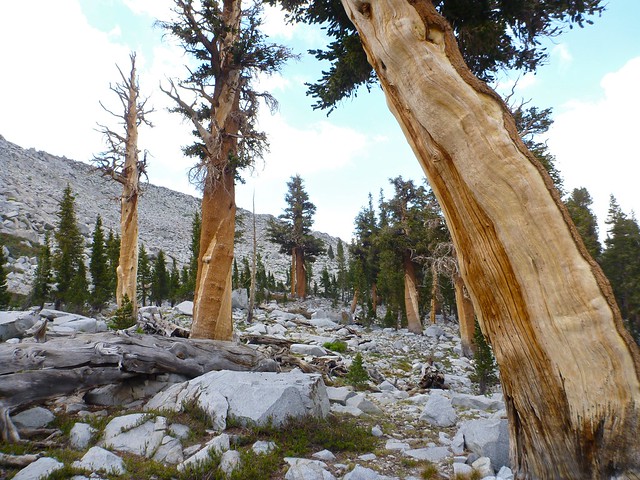
Foxtail pines on Eagle Lake - related to bristlecones, these rarities are ~ 2,000 years old
Here's a sampling of the fab flora we saw on the Eagle Lake Trail:
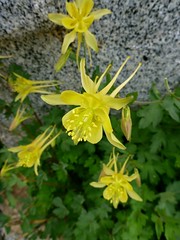
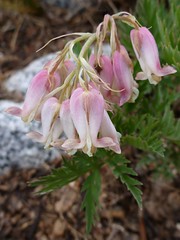
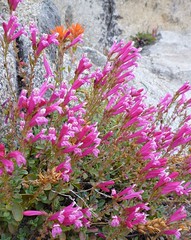
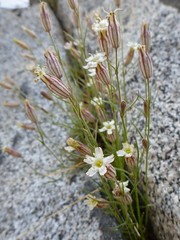
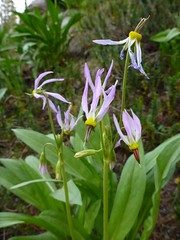
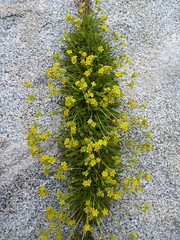
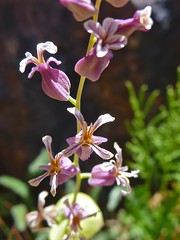
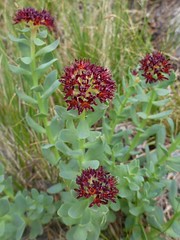
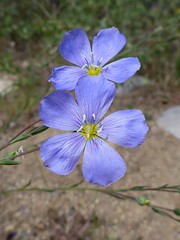
As we left the foxtail forest to head down the mountain, we crossed paths with a marmot out looking for dinner. Ole marmot was uncertain of us at first, but since we froze and were silent, it continued foraging. A second marmot even popped up further downhill.
Seems in remote areas like Eagle Lake, marmots aren't being fed (and thus learning to beg), nor are they being threatened. So, we're just another non-predator to mostly ignore, like deer.
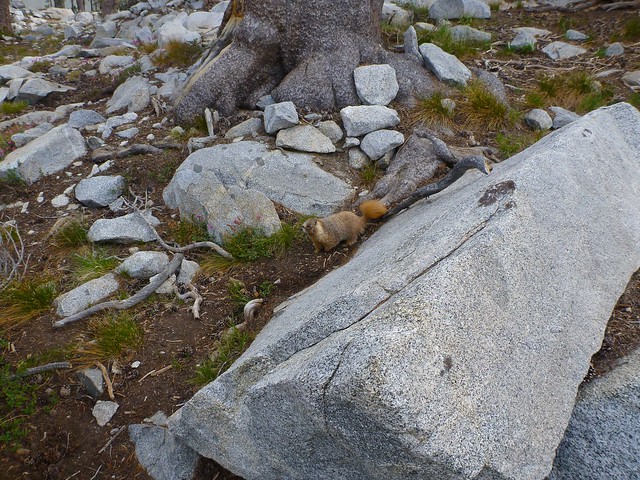
Marmot looking us over after we came into view and then stopped
All I had was my pocket Panny point-and-shoot, but standing still with the 5x zoom I was able to catch some OK photos, and even an HD video of the marmot digging around and eating:
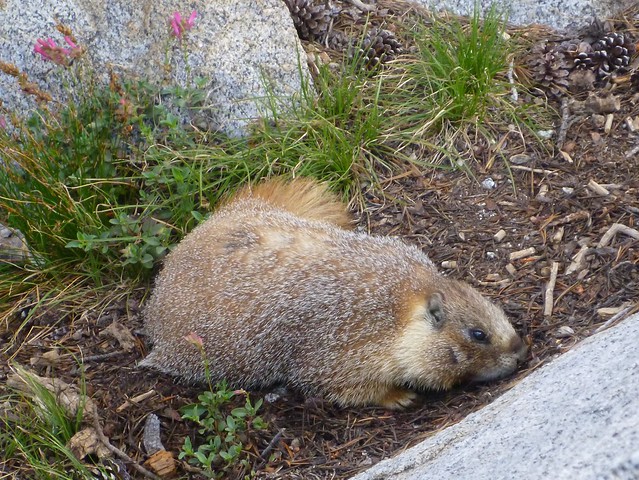
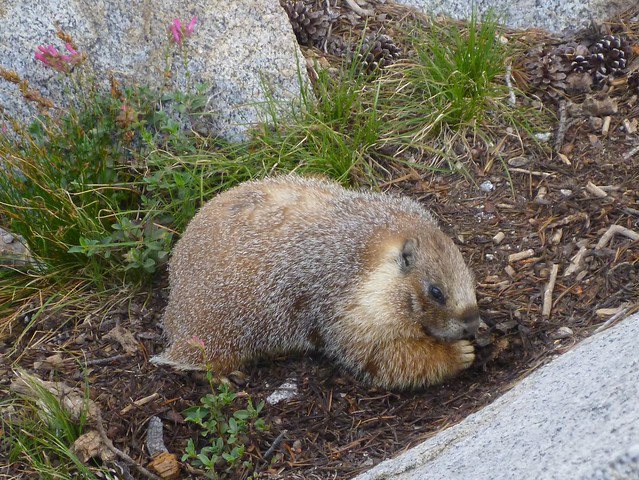

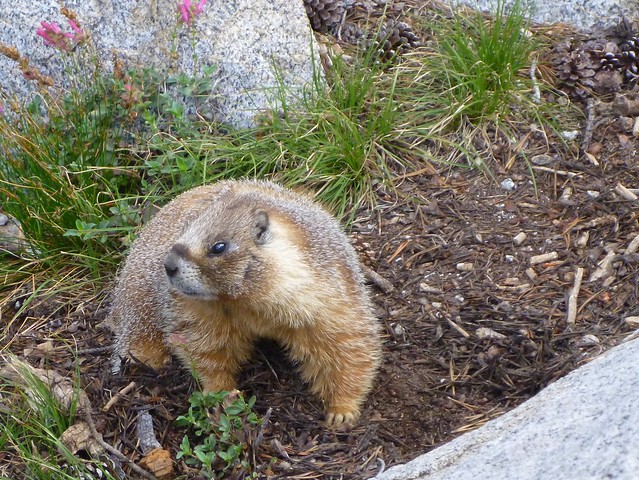
We couldn't tell what the marmot was munching, but the plant it's digging around, Mountain Pride, Penstemon newberryi, is a rhizomatous perennial. So, perhaps the rhizome rootlets and fresh leaves coming up from them. Marmots are mostly herbies that eat grass, leaves, flowers and roots (but enjoy grasshoppers and bird eggs now and then), so it would make sense.
Here's a 60 second video of the marmot in action:
Video of marmot foraging
Unfortunately, the view on the hike back down sucked - NOT!
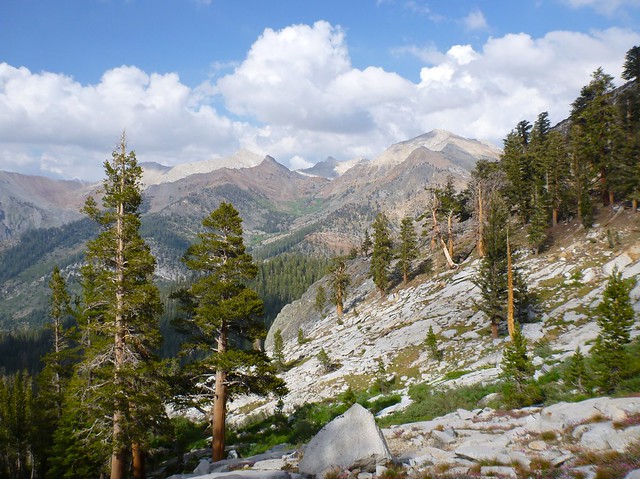
Coming back down from Eagle Lake towards Mineral King
Back at the parking lot we chuckled at the long-term cars carefully wrapped in tarps and chicken wire to protect them from the gnashers of these big, gentle ground squirrels.
But hey - you can't blame the lil' devils - if you had views like that and people kept parking cars in them, you'd go eco-terrorist too.
=====
References:
- Wikipedia - Punxsutawney Phil
- Wikipedia - Mineral King
- National Park Service - Mineral King Day Hikes
- Wikipedia - Hockett Meadow Ranger Station
- Wikipedia - Marmot
- Wikipedia - Yellow-bellied Marmot
- Wikipedia - Groundhog
- Wikipedia - Foxtail Pine
- Wikipedia - Lodgepole Chipmunk
- Calflora.org - Pinus balfouriana ssp. austrina
- Calflora.org - Penstemon newberryi
- My flickr set of photos from the Mineral King trip

A wonderful scenario. Thanks for the great shots.
ReplyDeleteD
Love the wildflowers!
ReplyDelete